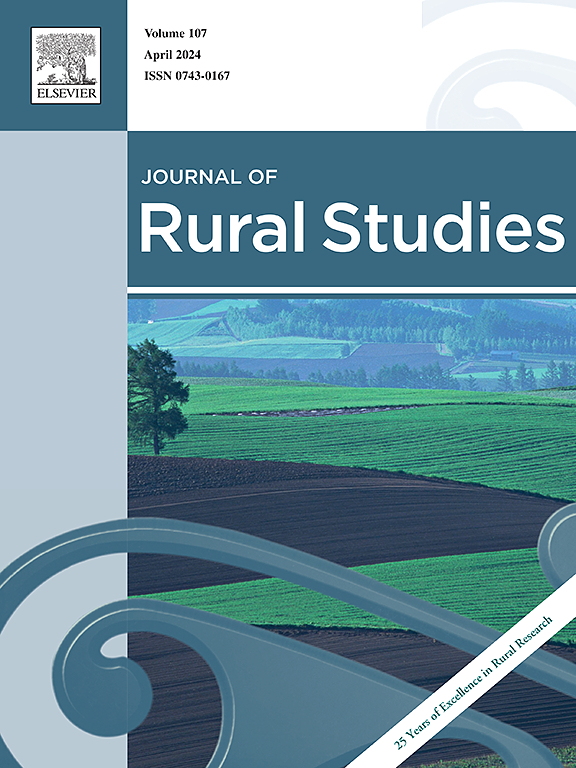Multiple marginalizations: Understanding rural restructuring around metropolitan development zone — A case study from Pengdu Village, Shanghai
IF 5.1
1区 社会学
Q1 GEOGRAPHY
引用次数: 0
Abstract
As urbanization and industrialization progress rapidly in China, villages around metropolitan development zones are at risk of marginalization. Although a number of studies have focused on the issue of rural marginalization, there is no comprehensive analytical framework for rural marginalization, the situation of rural marginalization around development zones is unclear, and its dimensions and mechanisms of rural marginalization have not yet been fully revealed. We constructed an analytical framework for multiple rural marginalization, and used Pengdu village in Shanghai as a typical case, integrating the methods of participatory observation, in-depth interviews, and statistical analysis into a rural study. We found that Pengdu Village faces multiple marginalization in the context of the construction and development of the Minhang Economic and Technological Development Zone, which is centrally manifested in four dimensions: physical marginalization, economic marginalization, social marginalization, and psychological marginalization. These four dimensions of marginalization are intertwined and reinforce each other, contributing to the overall marginalization. The multiple marginalization of rural areas is driven by a combination of forces emanating from globalization as well as the power, capital and social structures in which rural areas are embedded. To solve the rural development dilemma brought about by rural marginalization, initiatives such as bottom-up rural social innovation and rural livelihood diversification are feasible paths to achieve rural transformation and development.
多重边缘化:理解都市开发区周边乡村重构——以上海鹏渡村为例
随着中国城市化和工业化的快速发展,都市开发区周边的村庄正面临被边缘化的风险。尽管对农村边际化问题进行了大量的研究,但对农村边际化问题并没有一个全面的分析框架,开发区周边农村边际化的状况尚不明朗,农村边际化的维度和机制尚未得到充分揭示。构建多重乡村边缘化分析框架,并以上海鹏渡村为典型案例,将参与式观察、深度访谈、统计分析等方法整合到乡村研究中。研究发现,在闵行经济技术开发区建设与发展的背景下,彭都村面临多重边缘化,主要表现在物质边缘化、经济边缘化、社会边缘化和心理边缘化四个维度。边缘化的这四个方面相互交织,相互促进,从而导致整体边缘化。农村地区的多重边缘化是由全球化产生的各种力量以及农村地区所处的权力、资本和社会结构共同推动的。解决农村边缘化带来的农村发展困境,自下而上的农村社会创新、农村生计多元化等举措是实现农村转型发展的可行路径。
本文章由计算机程序翻译,如有差异,请以英文原文为准。
求助全文
约1分钟内获得全文
求助全文
来源期刊

Journal of Rural Studies
Multiple-
CiteScore
9.80
自引率
9.80%
发文量
286
期刊介绍:
The Journal of Rural Studies publishes research articles relating to such rural issues as society, demography, housing, employment, transport, services, land-use, recreation, agriculture and conservation. The focus is on those areas encompassing extensive land-use, with small-scale and diffuse settlement patterns and communities linked into the surrounding landscape and milieux. Particular emphasis will be given to aspects of planning policy and management. The journal is international and interdisciplinary in scope and content.
 求助内容:
求助内容: 应助结果提醒方式:
应助结果提醒方式:


